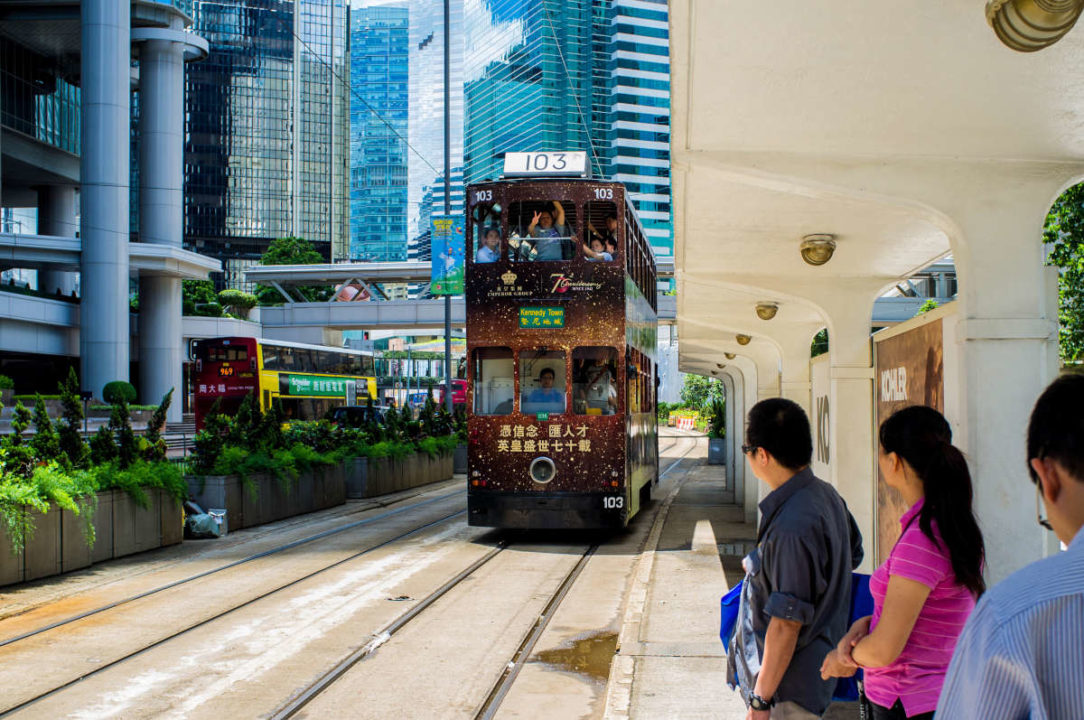The Hong Kong tram, funny as it may sound, is known as the “ding ding” because of the sound it makes to alert pedestrians. The tram has been and still is a supportive transportation system that’s also a significant icon of Hong Kong history. It is the only transportation that captures the character of old Hong Kong in time and has lasted until now.
This is the only tram system in the world that exclusively uses double-decker cars. It has been a classic local representation of Hong Kong for over 100 years and since then, has attracted people from all over the world to experience its rhythmic journey around the busy city with great views in-between skyscrapers and Victoria Harbour.
The history of the trams in Hong Kong
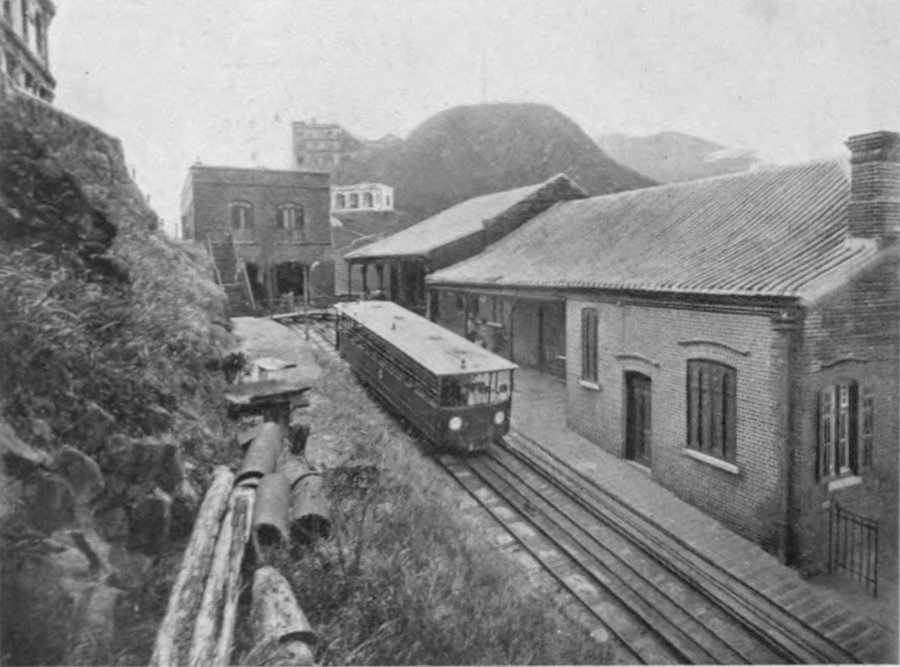
The trams were created to offer an efficient transportation service around the Hong Kong Island area. The first 26 cars were built in the United Kingdom, then delivered to Hong Kong to be installed. The fully installed trams then became available for public use in 1904, with one track running from Kennedy Town to Causeway Bay.
The system has been run by Hong Kong Tramway since the English colonial period and the first generation of trams were designed as single-deckers, with ten cars reserved for first-class passengers and the remaining sections for third-class passengers.
- The first class tramcars had one bench running along both walls, seating 32 and costing 10 cents.
- The third class had six sets of benches arranged perpendicular to the car’s length, seating 48 and costing 5 cents.
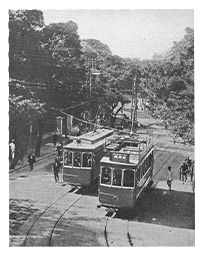
After a few years, the system became more regulated and less segregated.
The second generation of tramcars, which were double-deckers, became available in 1912, allowing first-class and third-class cars to be combined into one car. The upper deck and part of the main deck was for first-class riders and the rest of the space for third-class riders.
In 1923, the design began to innovate, with permanent wooden roofs and roll-down blinds added. Also at this time, the Hong Kong Tramway started to use power from the Hong Kong Electric Company to run the trams.
From 1930 on, the trams became known for advertising with full car-sized campaigns. The Japanese Occupation hit the tram system hard and fewer tramcars were in operation until after 1945. After the occupation ended, Hong Kong Tramway took building the cars into their own hands and redesigned them to be more streamlined. These cars are classified as fifth generation tramcars.
Of these redesigned cars, tram No. 120 is still being operated today.
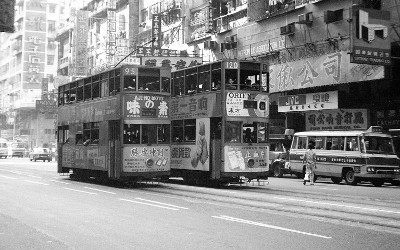
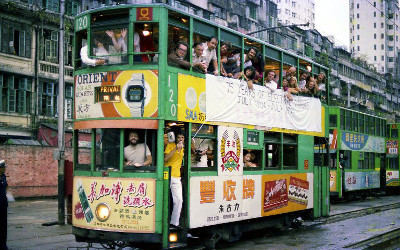
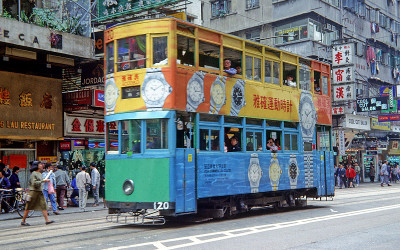
The popularity of the trams grew so much that to handle the capacity, the company added single-decker trailers to serve first-class passengers until these were retired in 1982. One of the biggest social changes came in 1971, when female conductors and drivers began to be hired for the first time. Two years later, class identification was removed. Then in 1976, coin boxes were added to replace conductors.
Hong Kong Tramway continued to grow even more, and in 1986 a new tram numbered No. 28 was designed for large parties along with a new antique tram No. 128 in 1987 to commemorate past designs.
The trams today
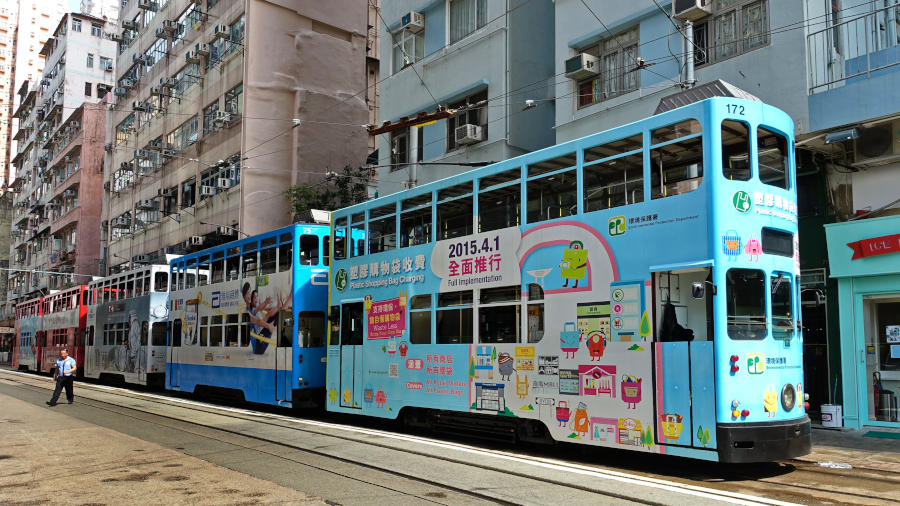
The current trams have been modernized for reduced noise and improved suspension, comfort, and the addition of advertisements. They are a convenient and eco-friendly transportation service to commute within the Hong Kong Island area. One of the biggest advantages of this system is that the cars follow their own dedicated track and avoid typical traffic jams.
As pedestrians, for your safety, be sure to look both ways to check if trams are coming before you cross the road. It is advised to plan ahead before your tram ride to know where to get off or which landmarks to look out for, as trams have no announcement of stops or digital signage. If you are unsure where to alight, you can ask fellow passengers for guidance or get off at large landmarks near your destination.
Practical information for riders
The earliest trams start around 5:45 a.m. and the last trams run from 11:30 p.m. to midnight.
However, note that the first and last tram times vary greatly from route to route and from weekdays to weekends/public holidays. For example, the last tram from Shau Kei Wan to Kennedy Town is as early as 7:10 p.m. while the last tram from Shau Kei Wan to Western Market is at midnight. To make sure you catch your tram, refer to the official timetable.
Tram fares:
- Adults: $2.60
- Children: $1.30
- Elderly: $1.20
Fares are paid as you leave the tram, not when you enter the turnstiles, via cash in the coin box or by tapping your Octopus card. Besides regular trams, Hong Kong Tramway offers sightseeing tours on their 1920s style tramcars. Fares are $150 for adults and $95 for children, and children aged four and below can take tour rides for free.
The sightseeing tram begins at two points: Western Market Terminus (308 Des Voeux Road Central, Sheung Wan) which departs every day at 10 a.m., 1:45 p.m., and 4:15 p.m., and Causeway Bay Terminus (88 Yee Wo St, Causeway Bay), which departs every day at 11:05 a.m., 2:50 p.m., and 5:20 p.m.
Tour passengers embark on a guided tour of the Island’s landmarks, with historical stories told in 8 languages and free Wi-Fi. Unfortunately, regularly running tours have been suspended due to the pandemic, but chartered tours are still available for booking.
Tram routes
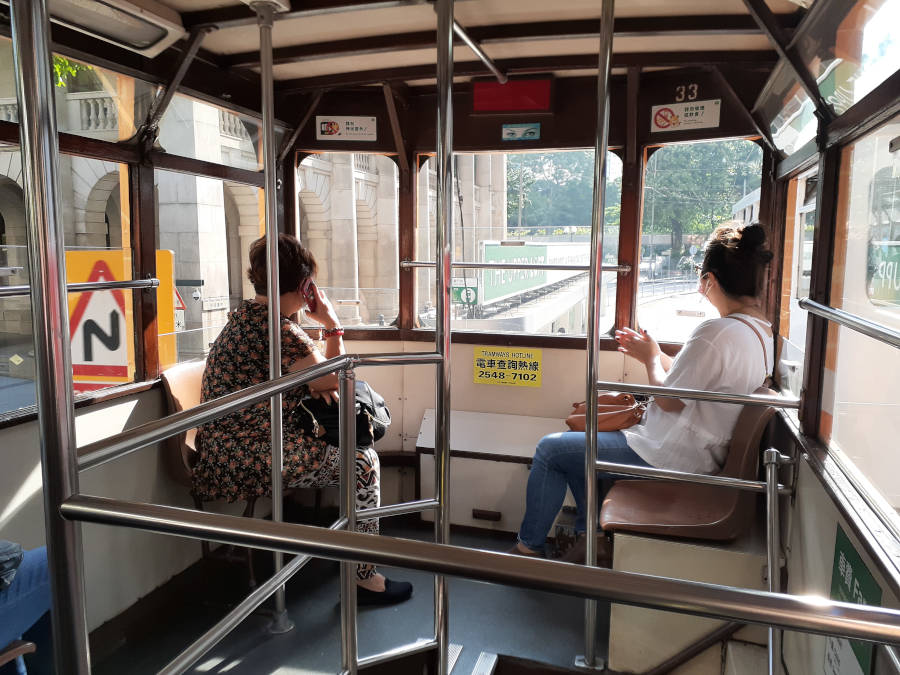
The tram system has 6 routes in total and approximately 120 stops. Find a comprehensive route map here.
- Western Market ↔ Shau Kei Wan
- Happy Valley ↔ Shau Kei Wan
- Shek Tong Tsui ↔ North Point
- Shek Tong Tsui ↔ Causeway Bay
- Kennedy Town ↔ Happy Valley
- Kennedy Town ↔ Shau Kei Wan
If you just have a general idea of the district you want to visit, the main stops in major districts are:
- Smithfield near Kennedy Town MTR Station
- Whitty Street near HKU MTR Station (Shek Tong Tsui District)
- Eastern Street near Sai Ying Pun MTR Station (Sai Ying Pun District)
- Man Wah Lane near Sheung Wan MTR Station
- Pedder Street near Central MTR Station and IFC
- Admiralty MTR Station
- O’Brien Road near Wan Chai MTR Station and Hong Kong Convention and Exhibition Centre
- Paterson Street near Causeway Bay Station and Sogo Department store
- Lau Sin Street near Tin Hau MTR station
- Fortress Hill MTR Station
- Shu Kuk Street near North Point MTR Station
- Finnie Street near Quarry Bay MTR Station
- Kornhill near Tai Koo MTR station and Taikoo Shing Cityplaza
- Holy Cross Path near Sai Wan Ho MTR station and Soho East
- Shau Kei Wan Terminus near Shau Kei Wan MTR station
Hong Kong Trams capture the unique essence of Hong Kong, the cultural combination from the west and the east. They are a classic Hong Kong icon where you can enjoy the feeling of old Hong Kong with a modern city view on your commute.


